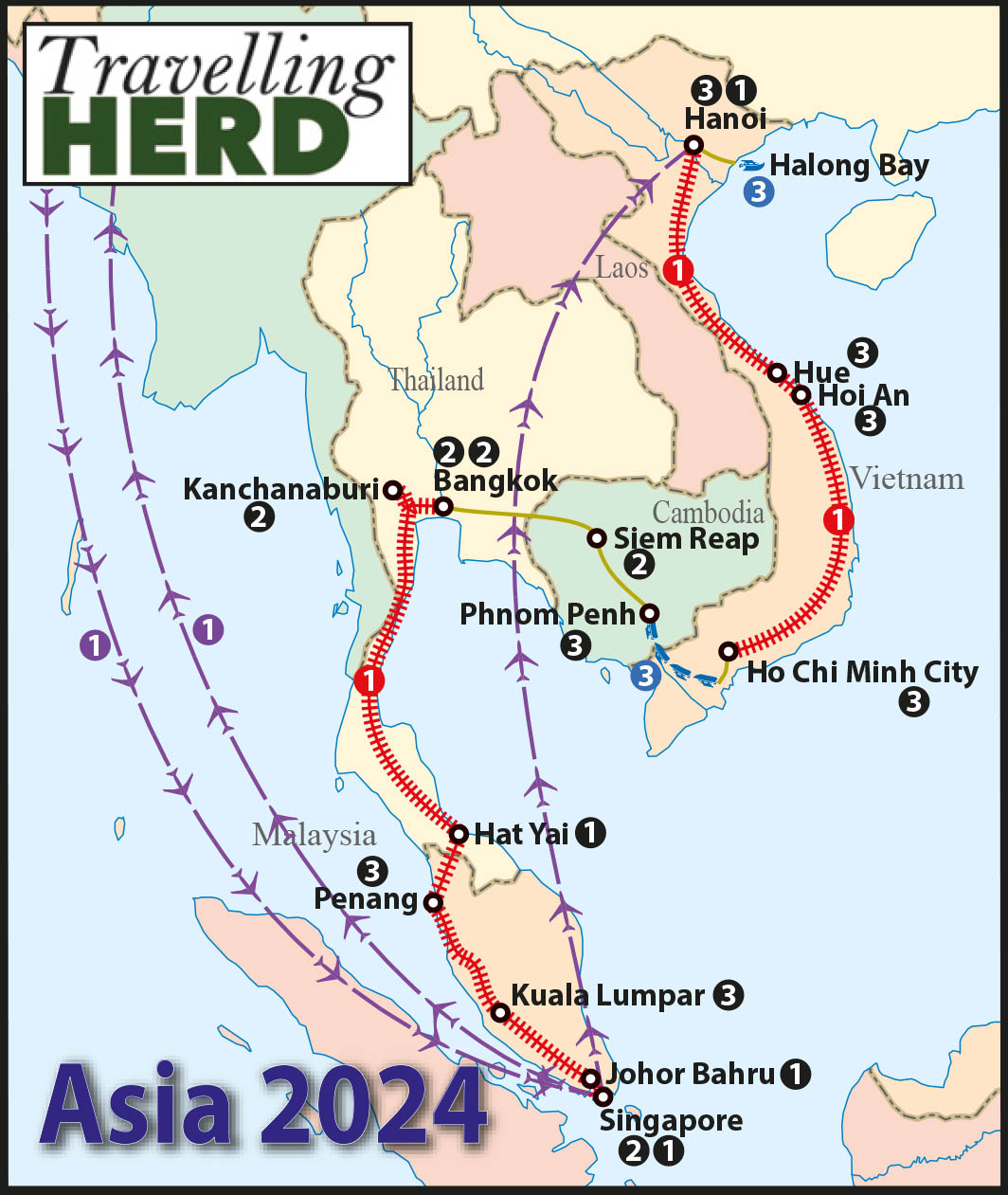Read this blog: The one where we learn the correct way to queue
Tuesday 2nd April 2024
We realised that a combination of the distances involved and the unseasonably hot weather meant we would need to use public transport in Bangkok rather than walking everywhere as we usually tend to do. Although it is normally hot in South East Asia in April, several locals have told us that it is significantly warmer here than expected for the time of year. This was not good news for Matilda, a pale skinned Western woman of a certain age more used to cold and rain than sunshine.
Robert’s research had identified a water bus and we decided we would use this to get to the first of the cultural sights on Matilda’s list.

The water bus proved to be a quick and easy way to get around. There is certainly no unspoken rule in Bangkok that boats will pass each other slowly or go at a speed which limits the wash and conserves the banks as there is, for example, on the Venetian laguna or the canal network in the UK. This is high speed transport.
We got off and walked to Wat Saket Ratchasima Mahawihan, often shortened to simply Wat Saket and also known as the Golden Mount. This is a Buddhist temple on the only hill in Bangkok. The ‘hill’ is actually artificial. King Rama III started to build a huge chedi [a buddhist monument similar to a stupa] inside the Wat Saket complex. Unfortunately the soft soil in Bangkok could not support its weight and it collapsed before the building was even finished. The detritus of soil and stone settled and took on the appearance of a natural hill, covered in vegetation. This mound was subsequently built on by King Rama V and the surrounding concrete walls were added in the 1940s to prevent erosion.
Within the complex, there is a shrine which is famous for housing the Black Buddha. However, since the statue has subsequently been painted gold, it is no longer so aptly named.

Three hundred and forty four steps lead up to the famous golden chedi [which houses some of the Buddha’s teeth] and panoramic views. However, as the top of the temple [its golden crowning glory] was shrouded in scaffolding we felt we would forego the climb in 35°C heat.

From here we walked to Wat Ratchanatdaram Worawihan which translates as Temple of the Royal Niece and is also known as Loha Prasat, literally meaning ‘the iron palace’.
It was built by order of King Rama III for his favourite granddaughter in 1846 although he did not live to see it completed.
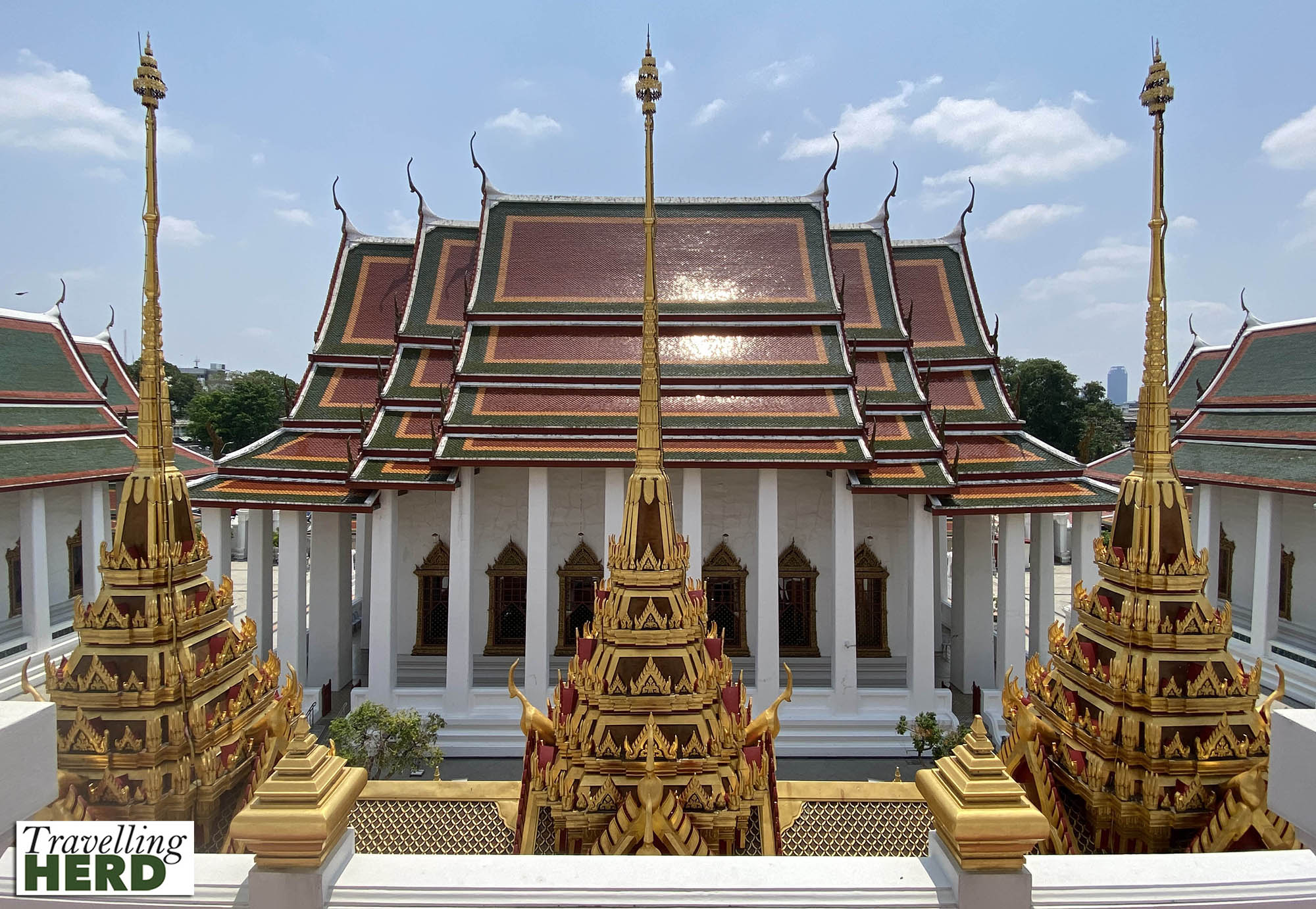
A spiral staircase rises through the centre providing views from the covered walkways on the way [see panoramic view below].

There are 67 steps to the summit which gives views over the peaks of the castle and across the city.
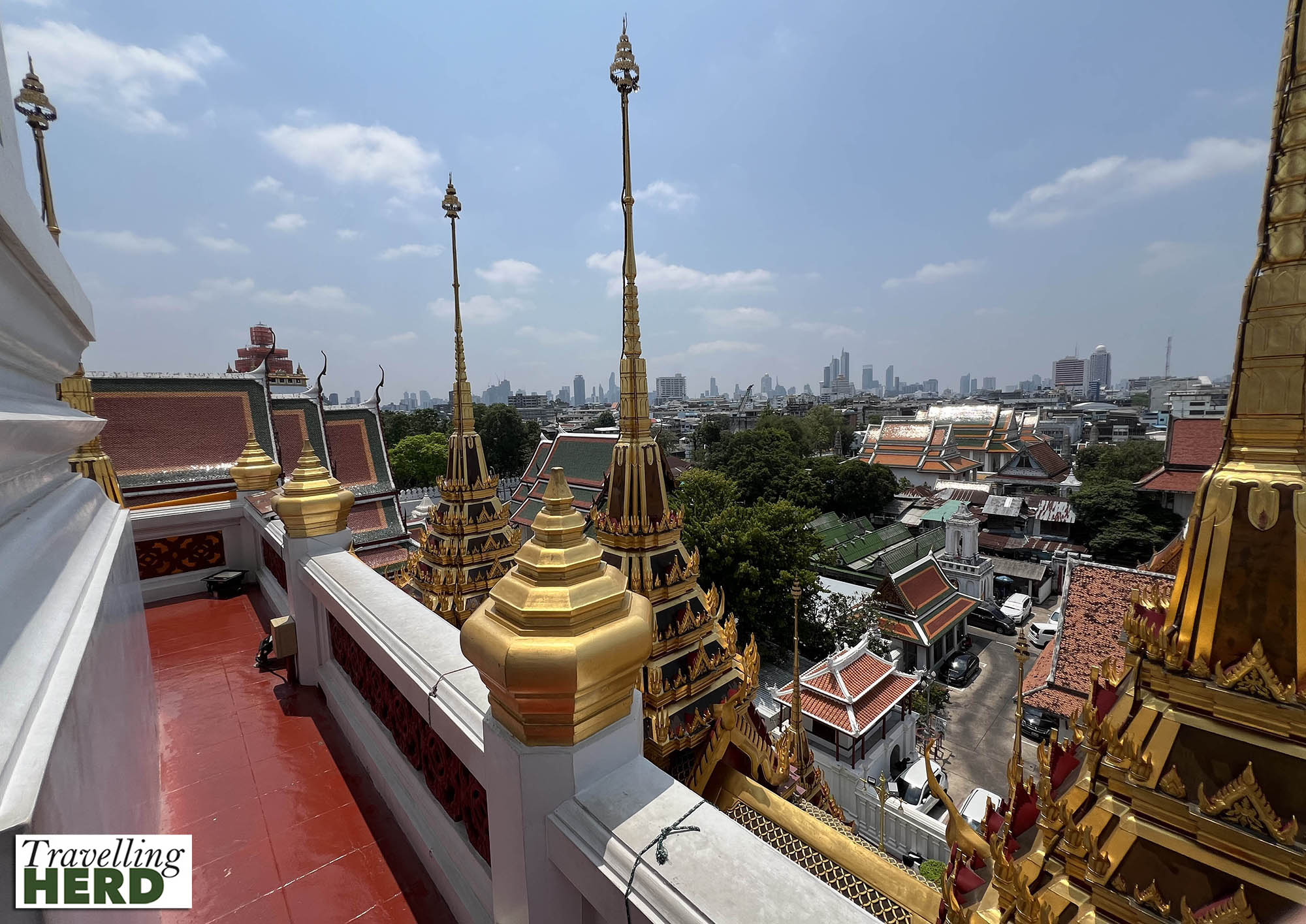
The assembly hall holds a large golden statue of the Buddha.

The central building is seven storeys high with 37 castle peaks, referencing the 37 virtues which are required to reach enlightenment in Buddhism, with 24 peaks on the first level, 12 on the level above and one at the pinnacle which holds a relic of the Buddha.

We stopped to rehydrate at branch of Golden Coffee. Neither of us were entirely sure exactly what the ingredients of root beer should be. Matilda had a vague feeling, quite erroneously as it turned out, that it might be ginger. Robert chose to sample the A&W root beer. After one taste, he googled the recipe. Apparently root beer was originally made using root bark of the sassafras tree. However this was banned in 1960 as it was found to be carcinogenic so other flavourings have been substituted. The can he had chosen was flavoured with wintergreen which is essentially pink ointment flavour and not at all refreshing. Robert felt he should be sticking to plain beer in future.

From here, with Matilda feeling rather more refreshed than Robert as she had chosen to drink Pocari Sweat to replace some lost electrolytes, we walked to the grand Democracy Monument, which stands on a vast roundabout. It was commissioned in 1939 to celebrate the 1932 Revolution when the People’s Party staged a bloodless coup and the country transitioned from being an absolute monarchy to a constitutional monarchy with democratic elections and a constitution.
The central structure of the monument represents a palm leaf manuscript box and holds a copy of the constitution. This is guarded by four ‘wings’ representing the Thai Army, Navy, Air Force and Police who were all instrumental in the coup. The four wings are each 24 metres [79ft] high and the radius of the monument is also 24 metres commemorating the fact that the coup took place on 24th June 1932.
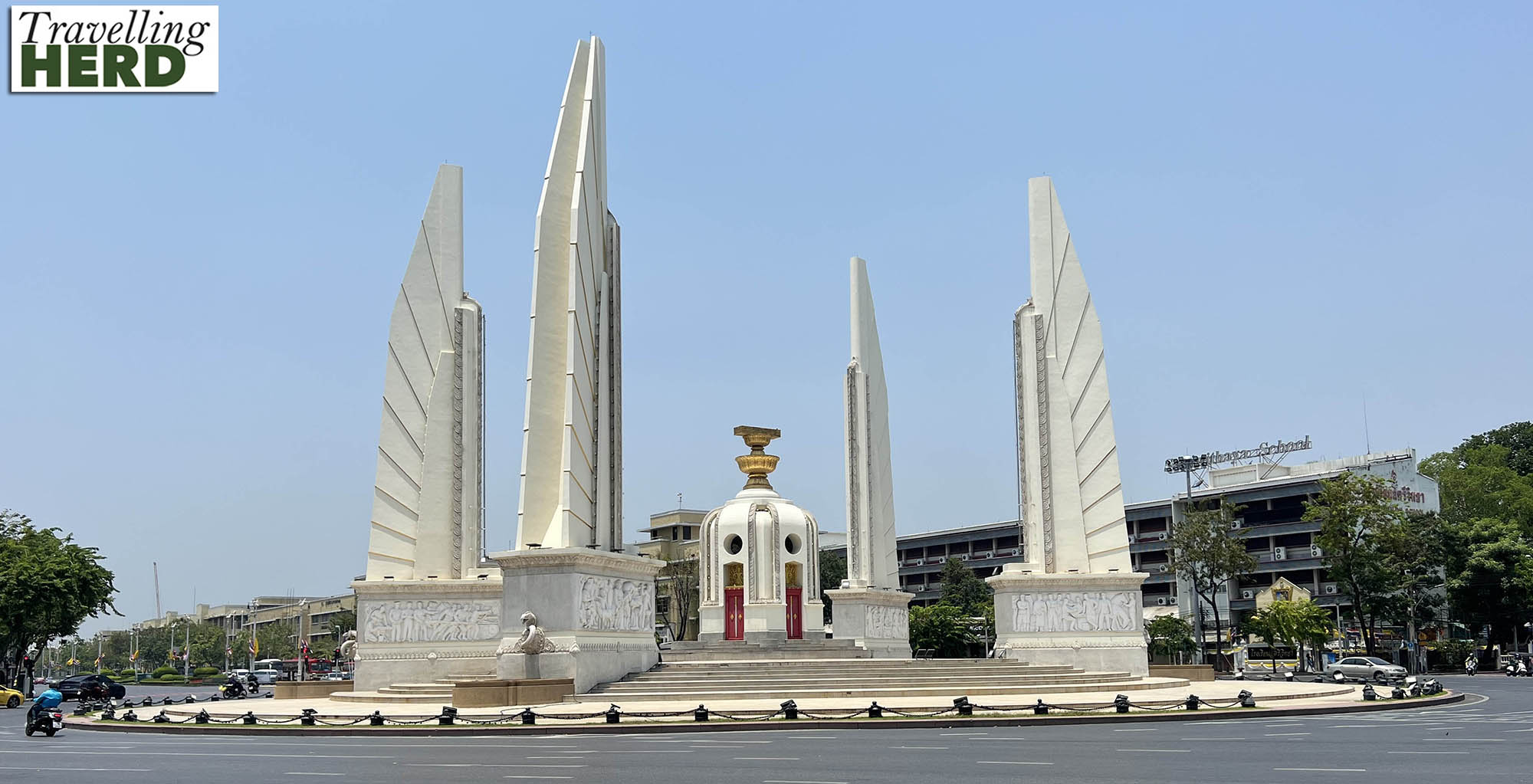
A little further along our route we passed the 14th October 1973 Memorial which was built to commemorate those who died during the uprising from 14th to 16th October of that year. Although a memorial was proposed in 1974 it was funded by donations, rather than the state, and was not finished until 2001.
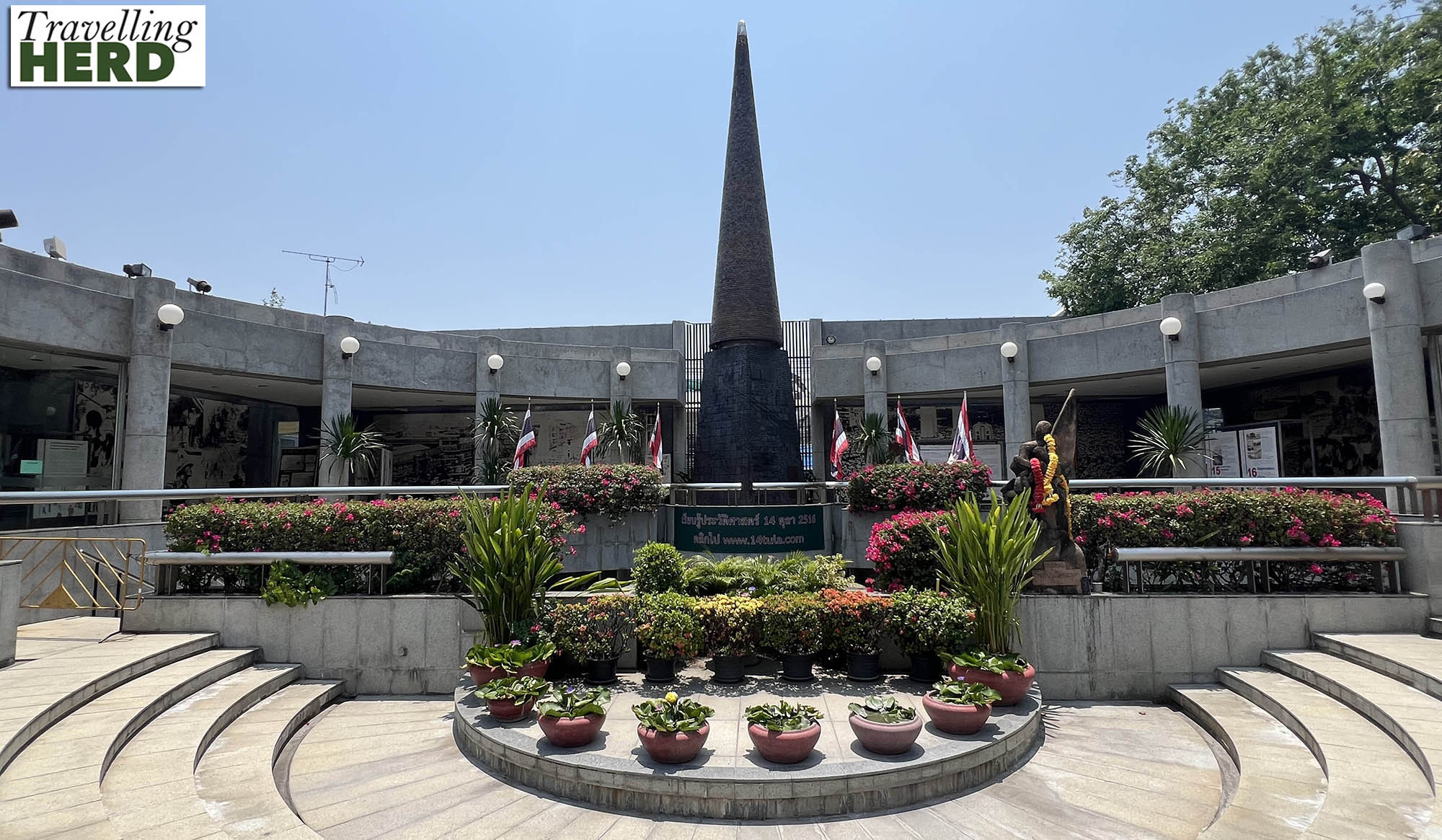
Robert then navigated us to Khoa San Road as he wanted to make sure he could find the ‘party street’ later.
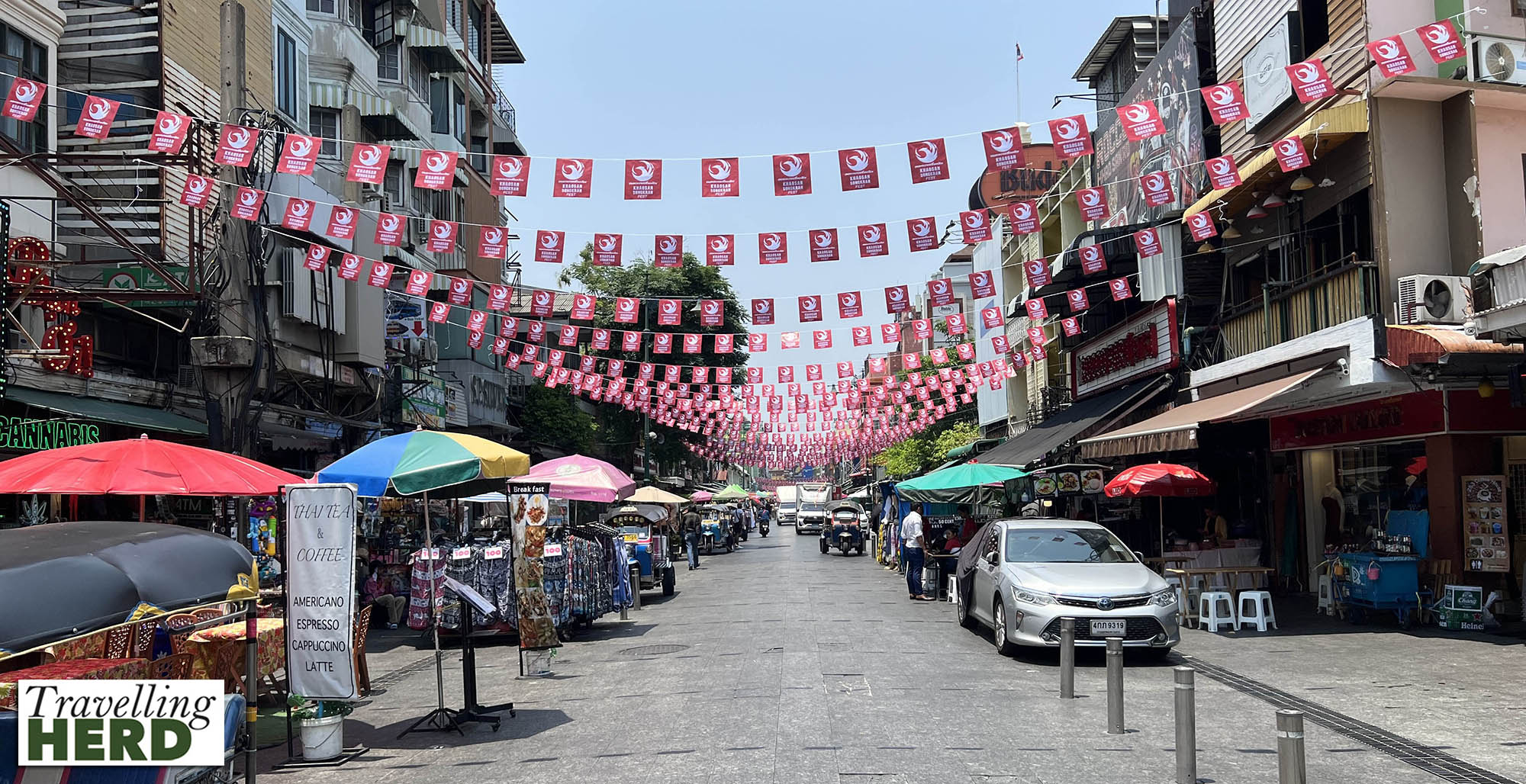
Despite the heat, the city seems very lush and we realised why when we saw the traffic queuing behind a water cannon which was being used to water the verges and park areas by the side of the roads.

We passed the imposing Ministry of Defence building . . .

. . . on our way to the Grand Palace.

Matilda had planned ahead and dressed appropriately but Robert’s shorts which came just above the knee were thought disrespectful. He was therefore forced to buy a pair of long trousers. The kiosk at the entrance was doing a very brisk trade and we realised why so many tourists have the colourful elephant print PJ-like ‘temple trousers’. Matilda was rather sad that Robert was refused a pair with the ubiquitous elephant print and was only allowed some plain blue ones. It seemed to be something to do with the size but since they have an elasticated waist we both felt it couldn’t be that critical.
Once Robert had bought trousers and pulled them on over his shorts we could continue on into the Grand Palace where huge colourful warriors stand guard, looking suitably belligerent and fierce.

Within the grounds of the Grand Palace stands the Temple of the Emerald Buddha [Wat Phra Kaew] complex which is also known as Wat Phra Si Rattana Satsadaram.
This is the most sacred Buddhist temple in Thailand as it houses the Emerald Buddha [below centre]. The statue is a palladium – something on which the security or of a city or a nation depends and so the safekeeping of the Emerald Buddha has the same significance as the ravens at the Tower of London.
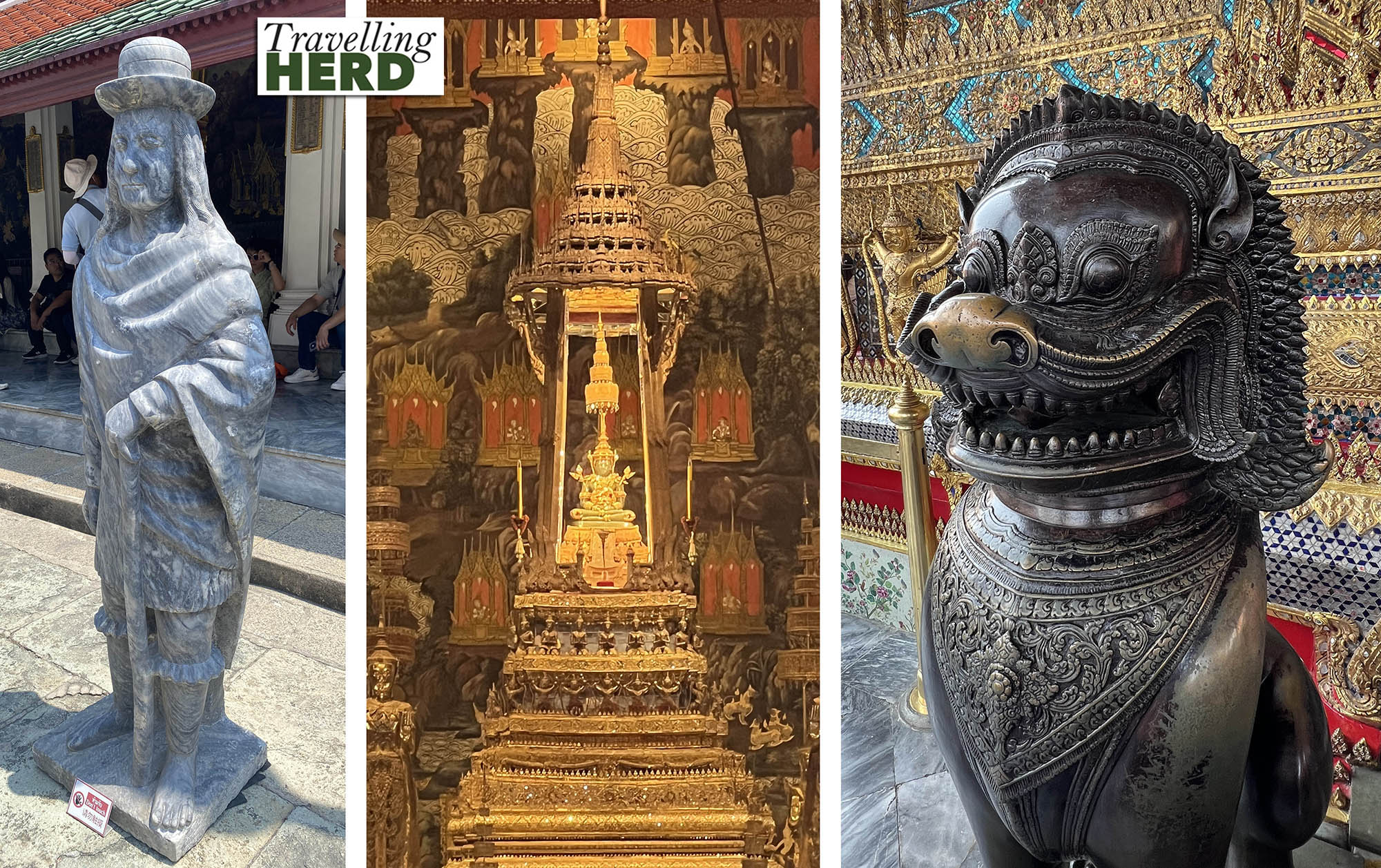
While undertaking road maintenance the Royal Household Bureau uncovered about 100 stone statues which had lain buried under the walls. They were carefully excavated, restored and are now on display around the courtyard of the Temple of the Emerald Buddha. The statues depict various nationalities and were apparently used as ballast for Thai merchant ships returning from China carrying lighter goods than those they had exported [see above left and also Selfie of the day].
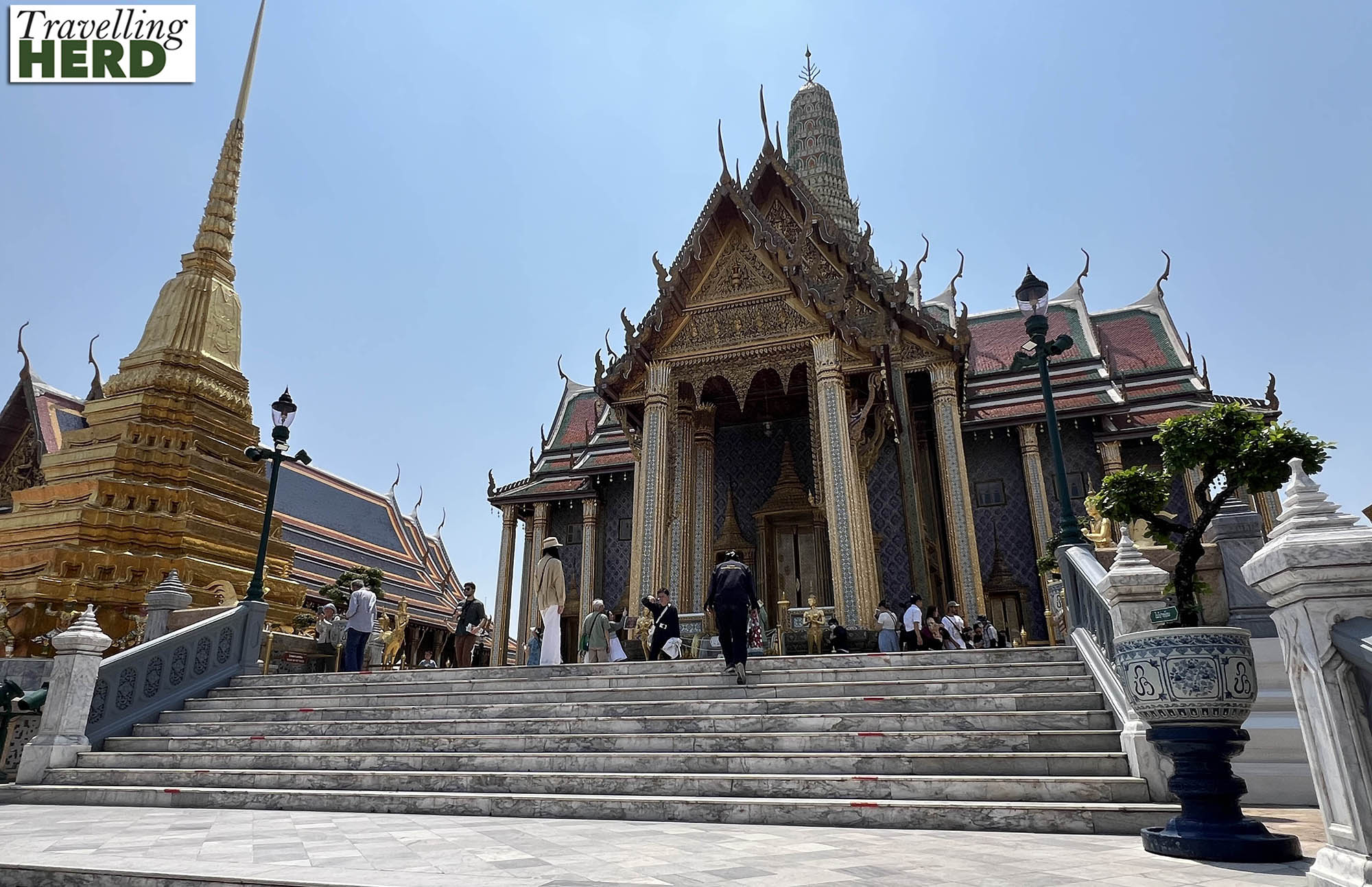
The decoration is detailed and ornate and once again, naga adorned the balustrades.
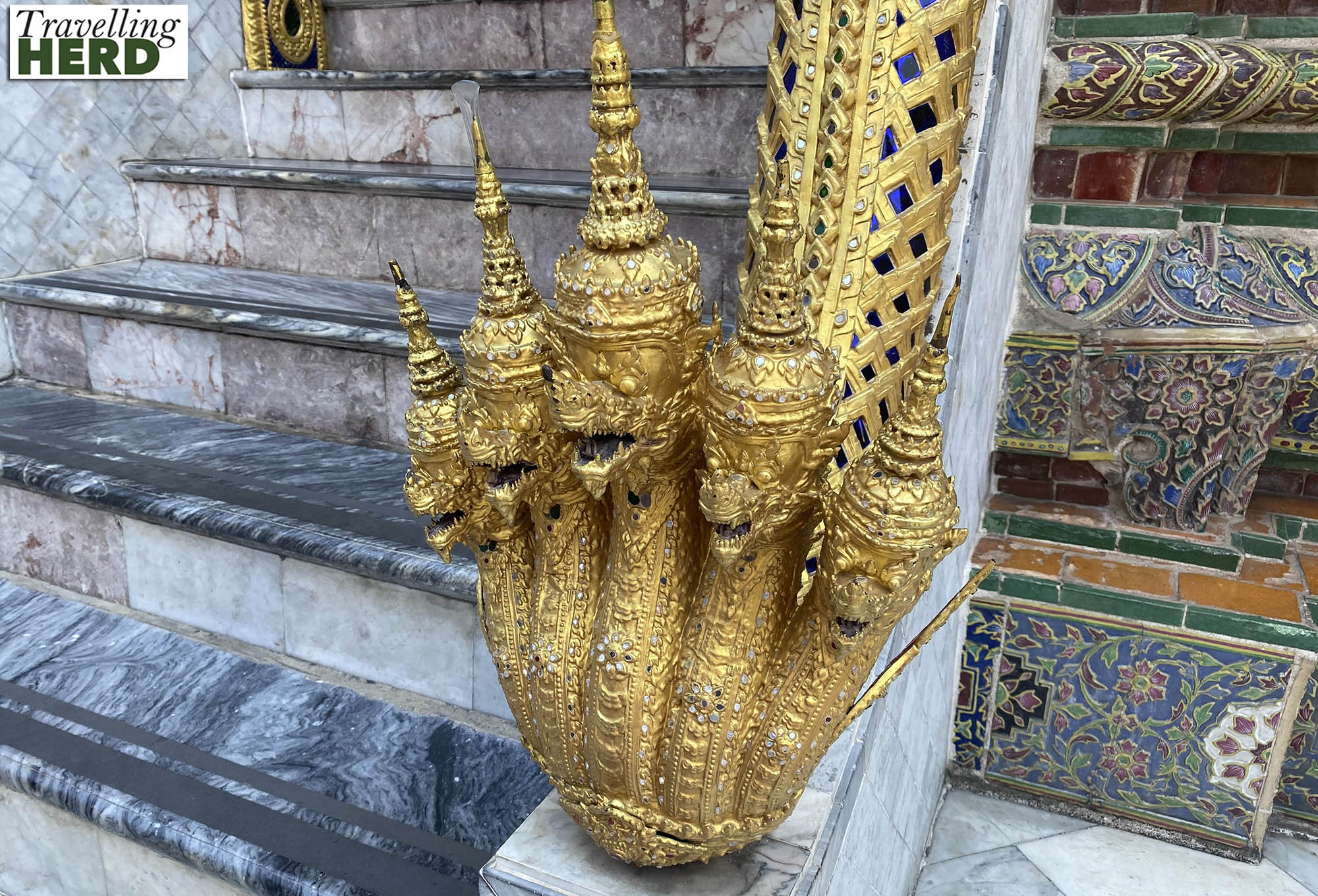
The palace has been the official residence of the Kings of Siam since 1782. The king, his court, and his royal government were based here until 1925.

It is still used and is a fitting backdrop for ceremonial events: gold, mosaic and tiled decoration abounds.
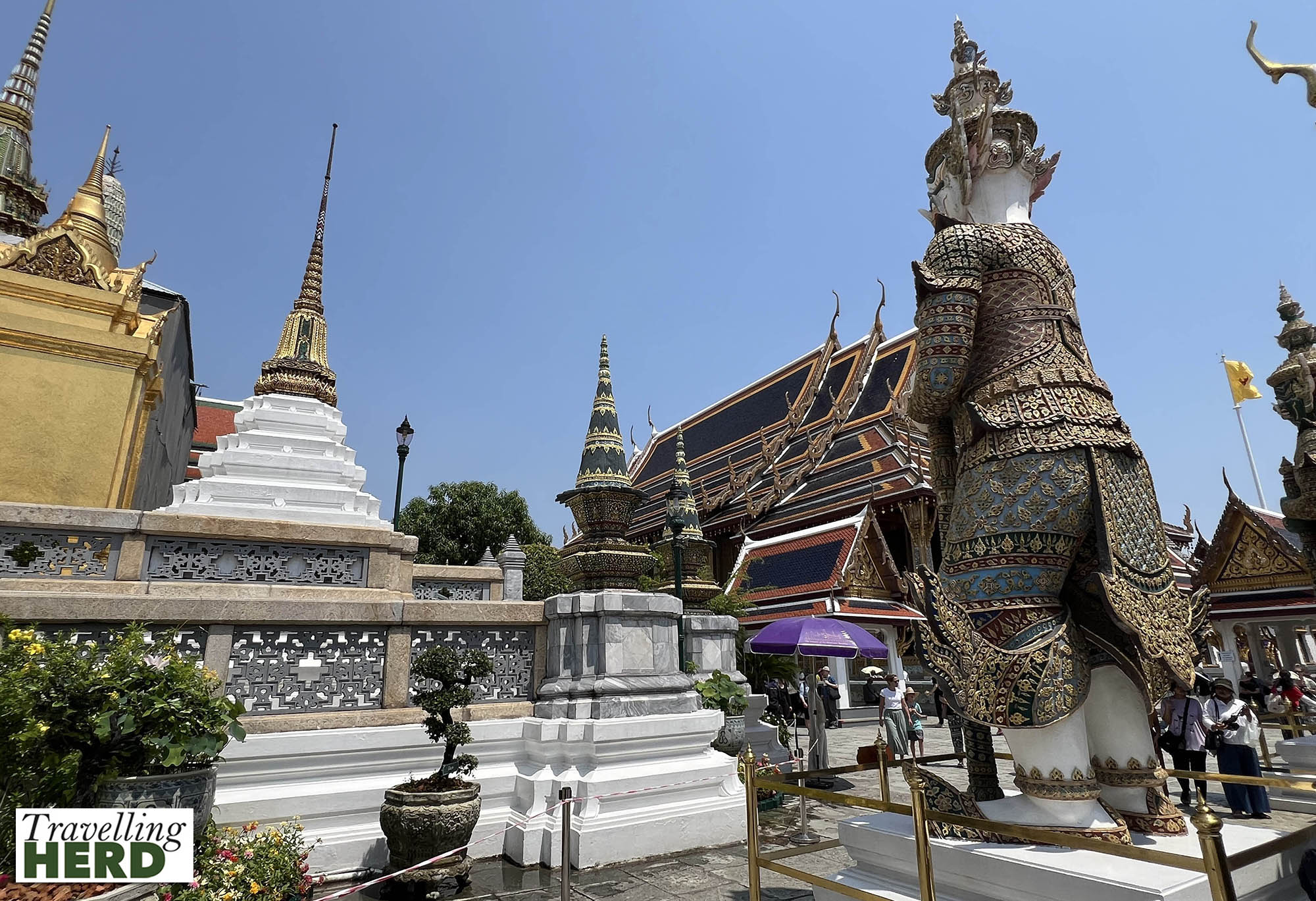
The Grand Palace includes the royal residence as well as administrative buildings, a temple and throne halls.
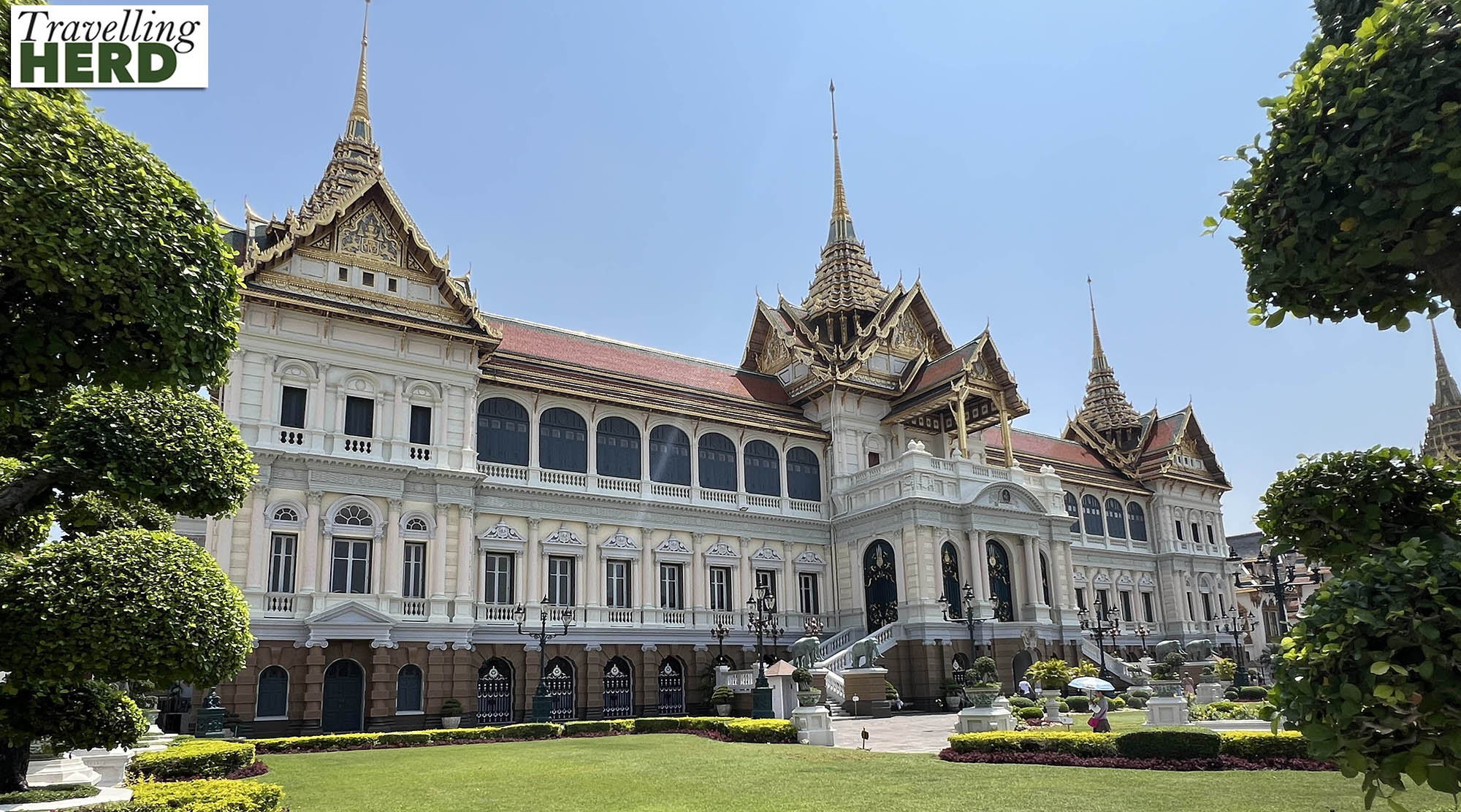
We took one last look back into the compound before . . .

. . . leaving the Grand Palace just in time to catch the end of the ceremonial changing of the guard.

Whichever country you are in, these ceremonies never seem to bear any resemblance to fighting readiness.
From here we caught a tuk tuk, which looked like it would be a mobile disco in the evening with lights, neon seats and no doubt a serious sound system, back to Khoa San Road.
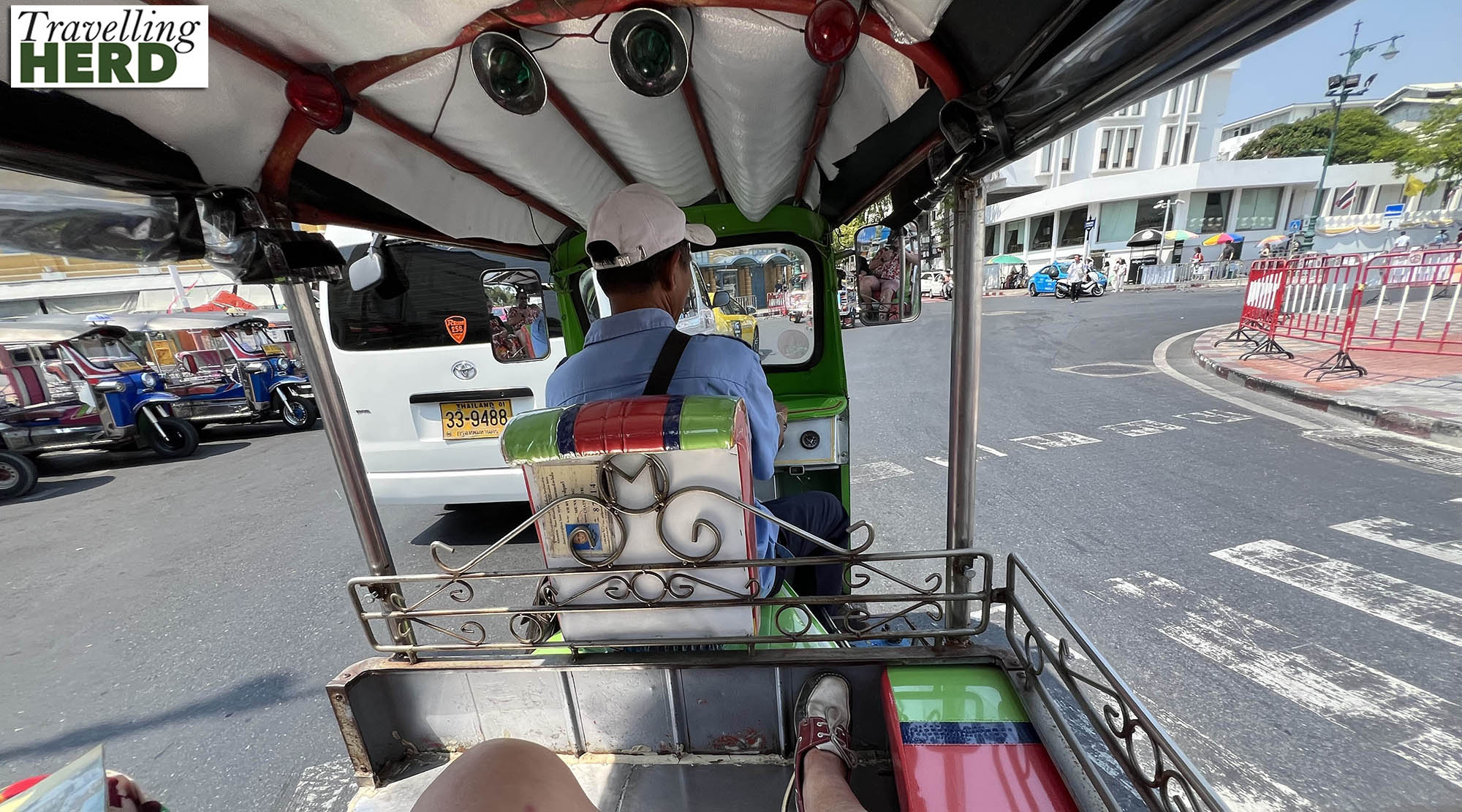
Here, Robert chilled, after the rigours of sightseeing, with a beer in front of a fan.
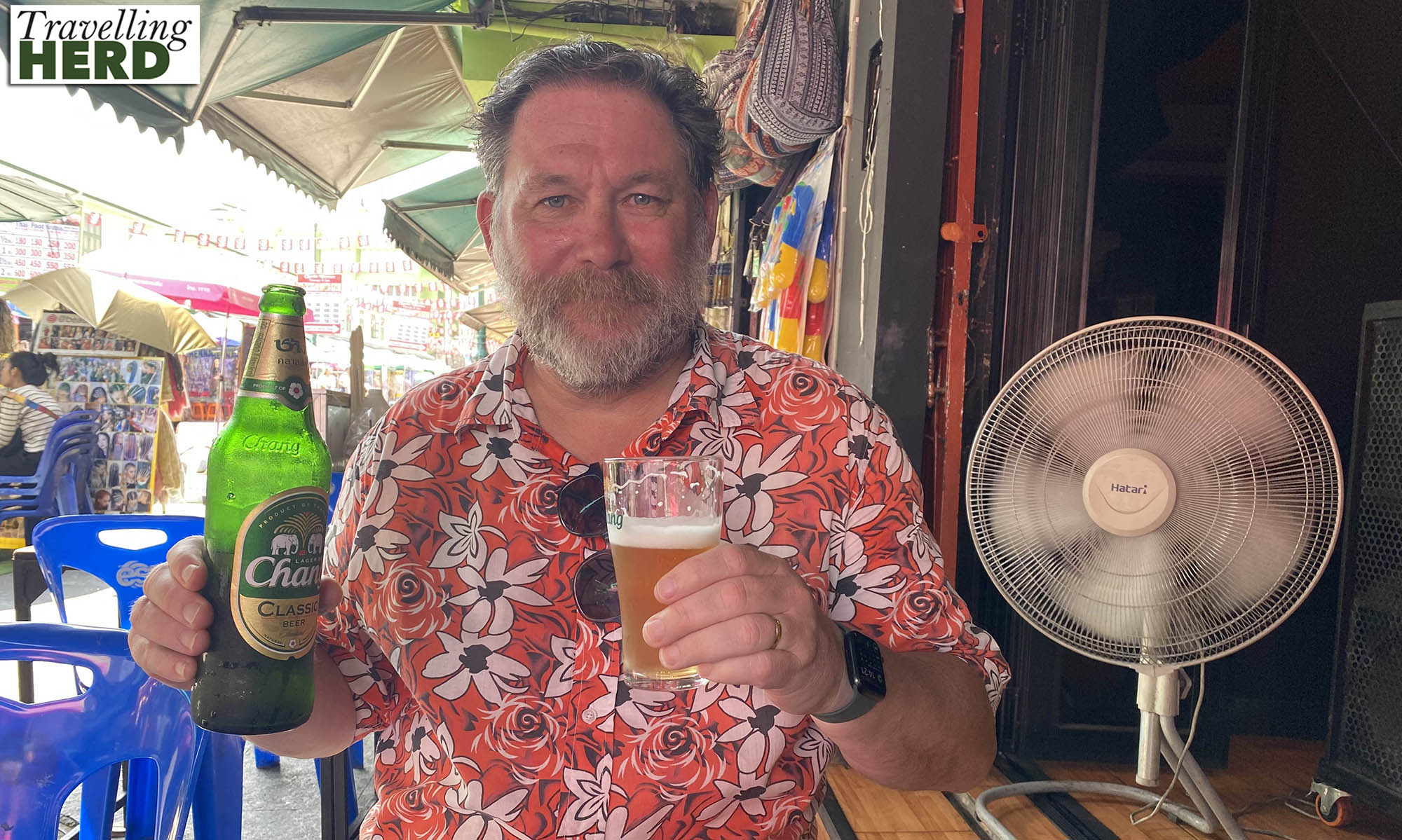
We caught another river bus [see video of the day].
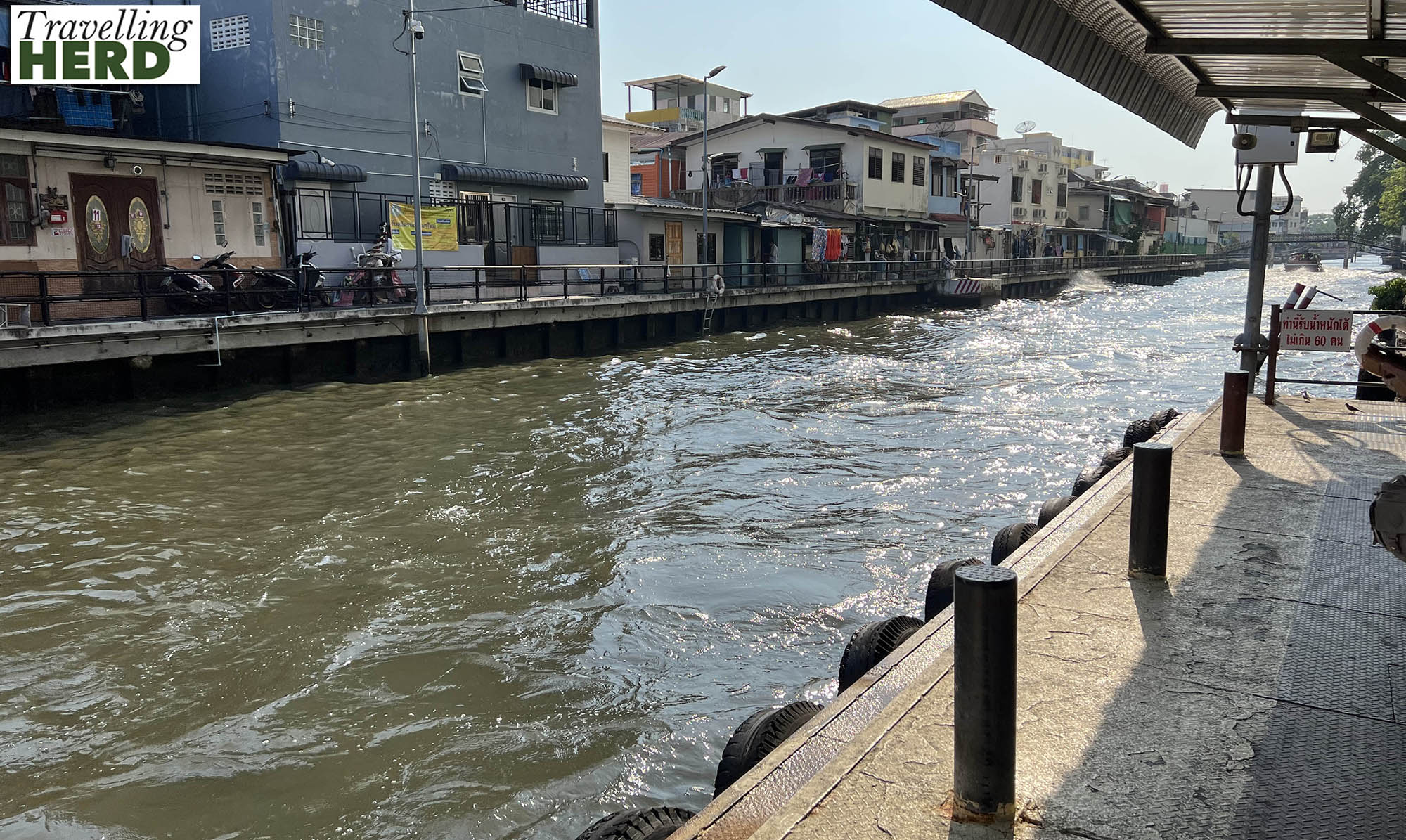
Then caught the Skytrain back to the hotel before heading out in search of food.
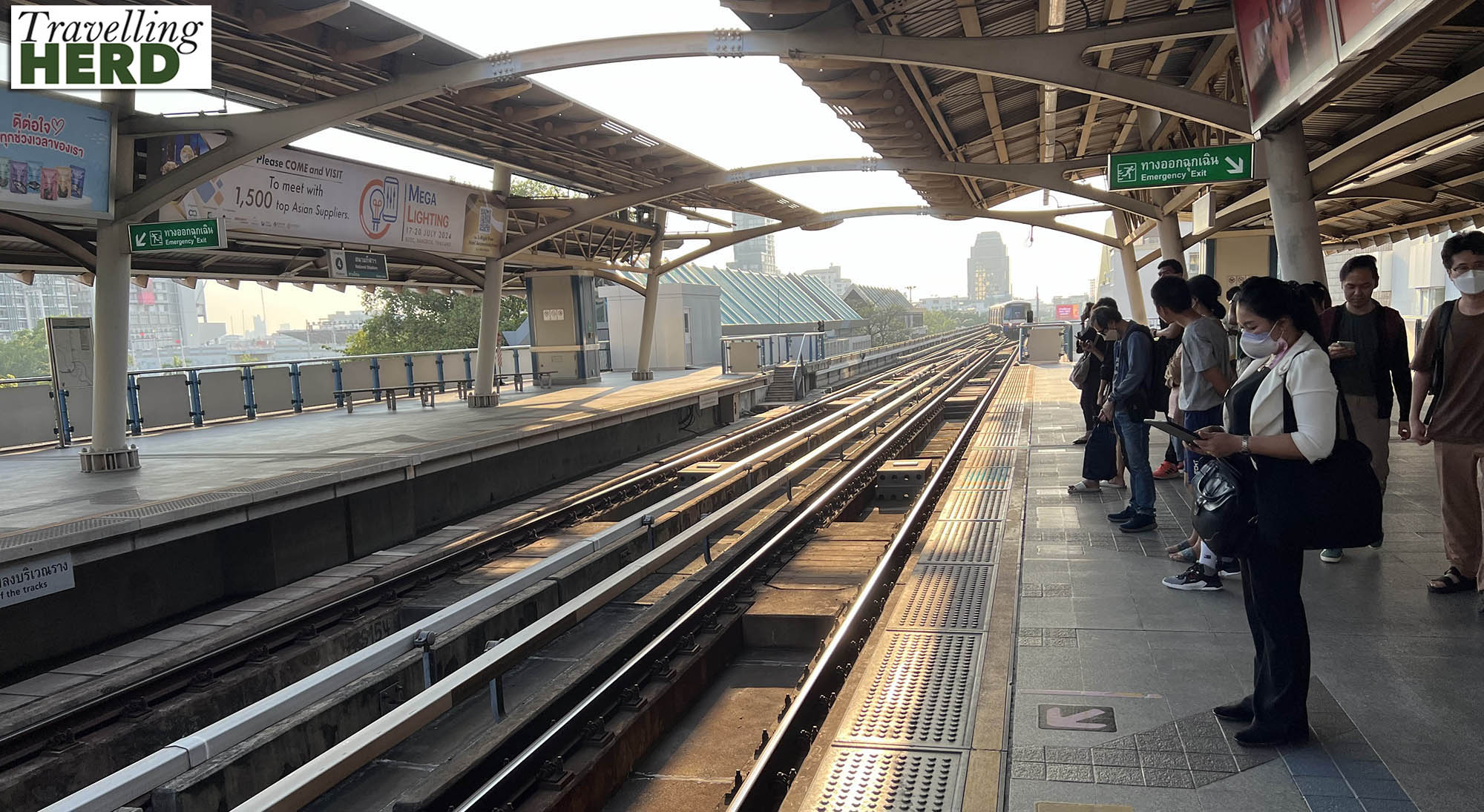
The Thai people could teach the British a thing or two about queuing. The place where the train will stop is marked out on the platform. People form orderly queues either side of the where the opening doors will be, leaving a space for passengers to disembark first.
Video of the day:
Selfie of the day:

Dish of the day:

Route Map:
